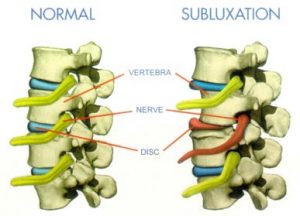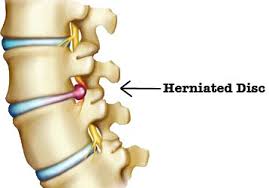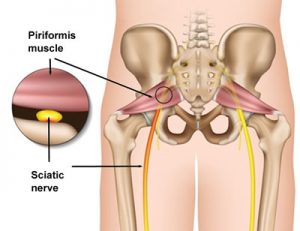Sciatica is a common but often tough to shake complaint which can be notoriously difficult to resolve. Sciatic pain ranges from mild to severe, and can affect one or both legs. Sometimes it can switch from side to side and occasionally it even presents as lower back pain, especially in the earlier stages. Since sciatic pain is very often “unfocused” many people struggle to understand the root cause of the problem, which makes effective treatment a challenge. Thankfully, as chiropractors, we specialise in understanding the complex interactions between the spine, its adjoining structure and supporting musculature. For us, beating sciatica is a straightforward process.
What is sciatica anyway?
The sciatic nerve is the longest nerve in the body. It runs from the pelvis through the hip area and buttocks and then courses down the back of each leg. The term sciatica refers to the inflammation of this nerve and the pain that radiates along its course. Sciatica may feel like a leg cramp or as numbness, burning or a pins-and-needles sensation. Acute sciatic pain can be very intense, with many patients describing it as piercing or stabbing.
What’s the root cause?
If you read our blog regularly, you’ll know that there are many conditions linked to the spine which are hard to diagnose from a description of the symptoms alone – since the spine and its supporting structures all function as one unit, a problem in one area can show up somewhere else. It will therefore come as no surprise that although sciatic pain is generally experienced in the legs, the root cause is often compression of the sciatic nerve root – which is the beginning of the sciatic nerve as it exits the spinal cord in the low back.
Nerve root compression is frequently the result of one of two conditions: vertebral subluxation (a misalignment of the spinal bones) or sacroiliac subluxation (a misalignment of the hip bones). Slightly less common causes include herniated spinal disks or piriformis syndrome (an inflammation of the piriformis muscle, which itself has many possible causes).
Chiropractic is effective in treating sciatica
It’s long been known that chiropractic treatment is perhaps the most effective option for the treatment of sciatica. In addition to producing quick results, chiropractic treatment will often correct other minor spinal issues, thus preventing reoccurrence of the sciatic pain from another associated cause. This is especially important when we bear in mind that the common causes of sciatica are often found in combination. Whats more, Since chiropractic is an all-natural, drug free solution the risk of side effects is practically nil.
For instance, one study compared chiropractic care for sciatica to bed rest, massage, electrical muscle stimulation, nonsteroidal anti-inflammatory drugs (NSAIDs) and muscle relaxants. Patients in the chiropractic care group experienced significant reductions in the length of care, faster improvement from symptoms, less difficulty at work and fewer missed work days, compared with all other groups[1].
So, what should I do?
The correct line of treatment (as usual!) depends on the cause of your sciatica. The first step should always be a consultation with a trained professional, who can diagnose the problem and its causes properly. Remember sciatica is multifactorial, and should be assessed as such! Once the underlying issue is understood the path to recovery is a simple one!
Subluxations
Vertebral subluxation is probably the most common cause of sciatica, which is hardly surprising since its such a widespread condition! Chiropractic treatment is by far the best approach for addressing vertebral subluxations. Chiropractors use gentle movements known as chiropractic adjustments to realign the spinal bones, thus relieving the pressure on the sciatic nerve. In a recent large-scale study, 576 patients from a number chiropractic clinics had their progress through treatment for sciatica monitored. Researchers recorded their level of pain, and noted the point at which the patients felt they had reached “maximum improvement. The average treatment time was just 43 days (which approximated to 19 visits). [2]
Herniated discs
Herniated Discs are less common, but still a frequent issue we see here at the clinic. Herniated discs occur when the spinal disks, a fibrous construction which acts a shock absorber between the spinal bones, degenerate or are injured – causing them to bulge to one side, trapping the sciatic nerve.
Thankfully, chiropractic care is also effective in treating herniated disks. One study, performed in Italy, included 64 men and 38 women ranging in age from 19 to 63 years. Patients had acute back pain and sciatica with herniated discs. While 53 of the patients received chiropractic adjustments, 49 underwent sham or “simulated” adjustments.
Chiropractors performed the adjustments or simulated adjustments five days per week. The number of sessions depended on pain relief, but was limited to 20. Patients were assessed at 15, 30, 45, 90 and 180 days. At each visit, the chiropractors used standard techniques to assess pain levels and improvement.
Patients receiving genuine chiropractic adjustments enjoyed significant reduction in pain severity and duration, compared with the patients undergoing simulated adjustments[3].
Piriformis syndrome
The piriformis muscles extend along both sides of the lower buttocks – the sciatic nerves travel below the piriformis en-route from the spine, to the back of the leg. If the piriformis becomes inflamed, pressure if applied to the sciatic nerve, resulting in sciatic pain.
Piriformis syndrome itself can cause the muscle to spasm, resulting in pain in the buttocks, or can pressure the sciatic nerve leading to sciatica – or both!
Piriformis syndrome is best treated with a combination approach, which typically includes stretching, massage, chiropractic adjustments and physical therapy in some cases. While piriformis syndrome itself is not strictly a spinal problem, a thorough postural analysis may be of benefit, as an imbalance somewhere else in the body may be the cause of the irritation.
What not to do
Unlike chiropractic care much research now shows that traditional medical care for sciatica is not effective – this is simply because it fails to address the underlying issue.
One typical treatment approach is simply bed rest. Unfortunately, this approach is not effective – by way of example one study of 183 sciatica patients found that bed rest was no more effective than “watchful waiting.” After 12 weeks, patients who were assigned to bed rest had no more improvement than those who were in a “watchful waiting” group. Researchers concluded that there was “no evidence that bed rest is an effective treatment for sciatica.”[4]
Another standard treatment involves masking the pain with continual doses of nonsteroidal anti-inflammatory drugs (NSAIDs. Although these drugs may seem to pose little risk, overuse is linked to chronic headaches and migraines, gastrointestinal problems, heartburn and ulcers. While these medications can be effective in dealing with sciatic pain in the immediate term, they are not a long term solution, and don’t do anything to address the underlying issue.
It’s not just common over the counter medicines which are sometimes prescribed for sciatica either. A recent study sought to explore weather Pregabalin, a drug which has been shown to be effective in the treatment of some types of neuropathic pain, might be effective in reducing sciatic pain.
The study, which offered half of its participant group (209 patients) Pregabalin and half a placebo, measured their pain scores for a total of 52 weeks. The researchers concluded that treatment with pregabalin did not significantly reduce the intensity of leg pain associated with sciatica and did not significantly improve other outcomes, as compared with placebo, over the course of 8 weeks. That being said, just as with over the counter medicines, the incidence of adverse effects was significantly higher in the pregabalin group than in the placebo group. Over the course of the study there was a total of 227 reported side effects, of which dizziness was a common type. [5]
The take away message is clear – treatment with prescription medication or over the counter remedies, especially over the long term, comes with an increased risk of side effects, and is not likely to significantly improve the condition.
Are you suffering with sciatica?
If you’re struggling with sciatica, especially if its a long standing issue, you might feel like there’s nothing more that can be done – since sciatica is often hard to treat this is a common mood among sufferers, but please don’t suffer in silence! At complete chiropractic we’ve help hundreds of people to overcome sciatica (and keep it from reoccurring!) every year. If you’ve never tried chiropractic before, why not read a bit more about what we do – and then take advantage of our new patient special!
[1] Ann Swiss Chiro Assoc 1989;9: 133
[2] J manipulative ther. 1984:7:1
[3] Spin e J 2006;6:13 1-7
[4] NEMJ 1999:340:4 18
[5] N Engl J Med 2017; 376:1111-1120

